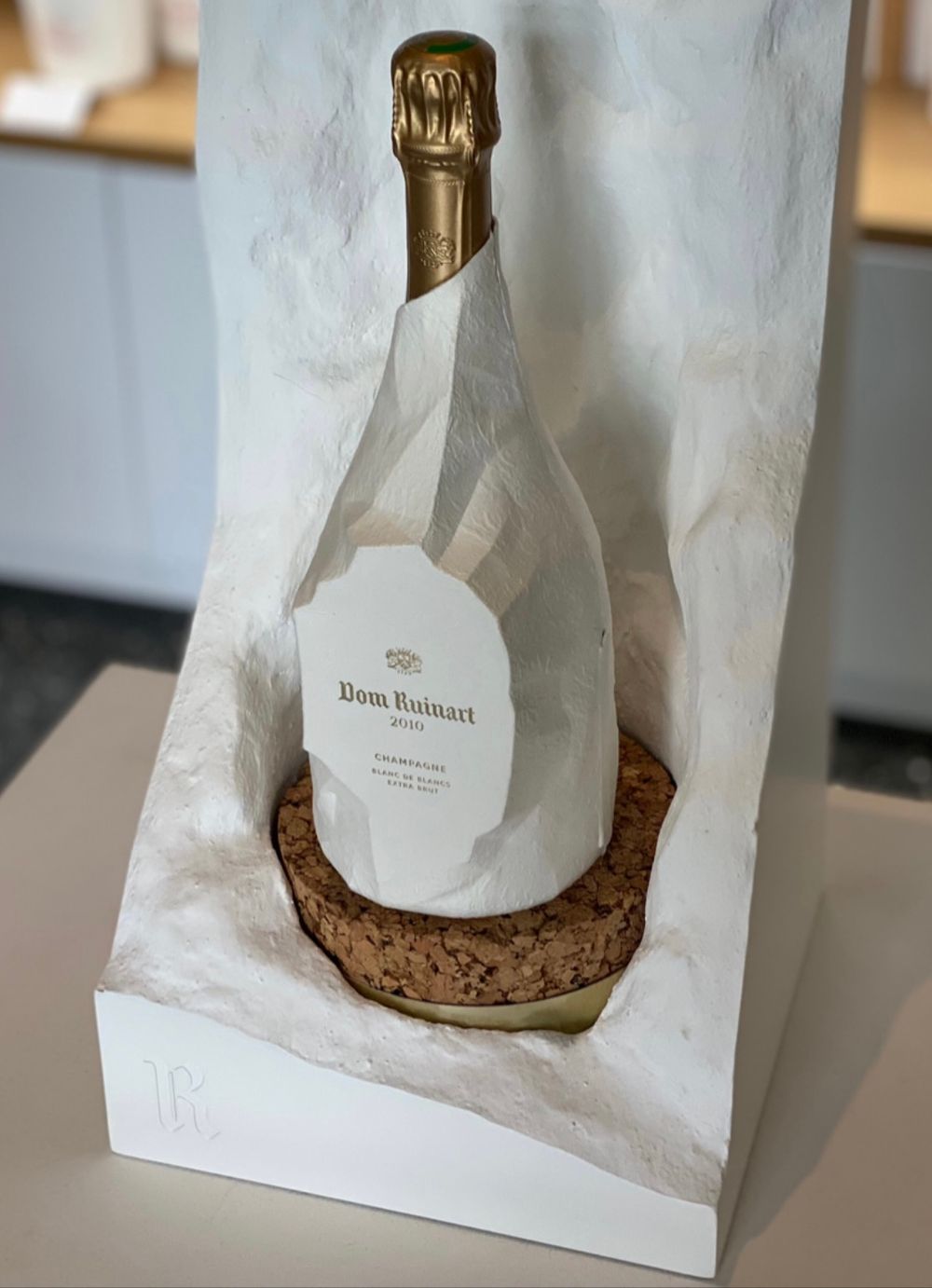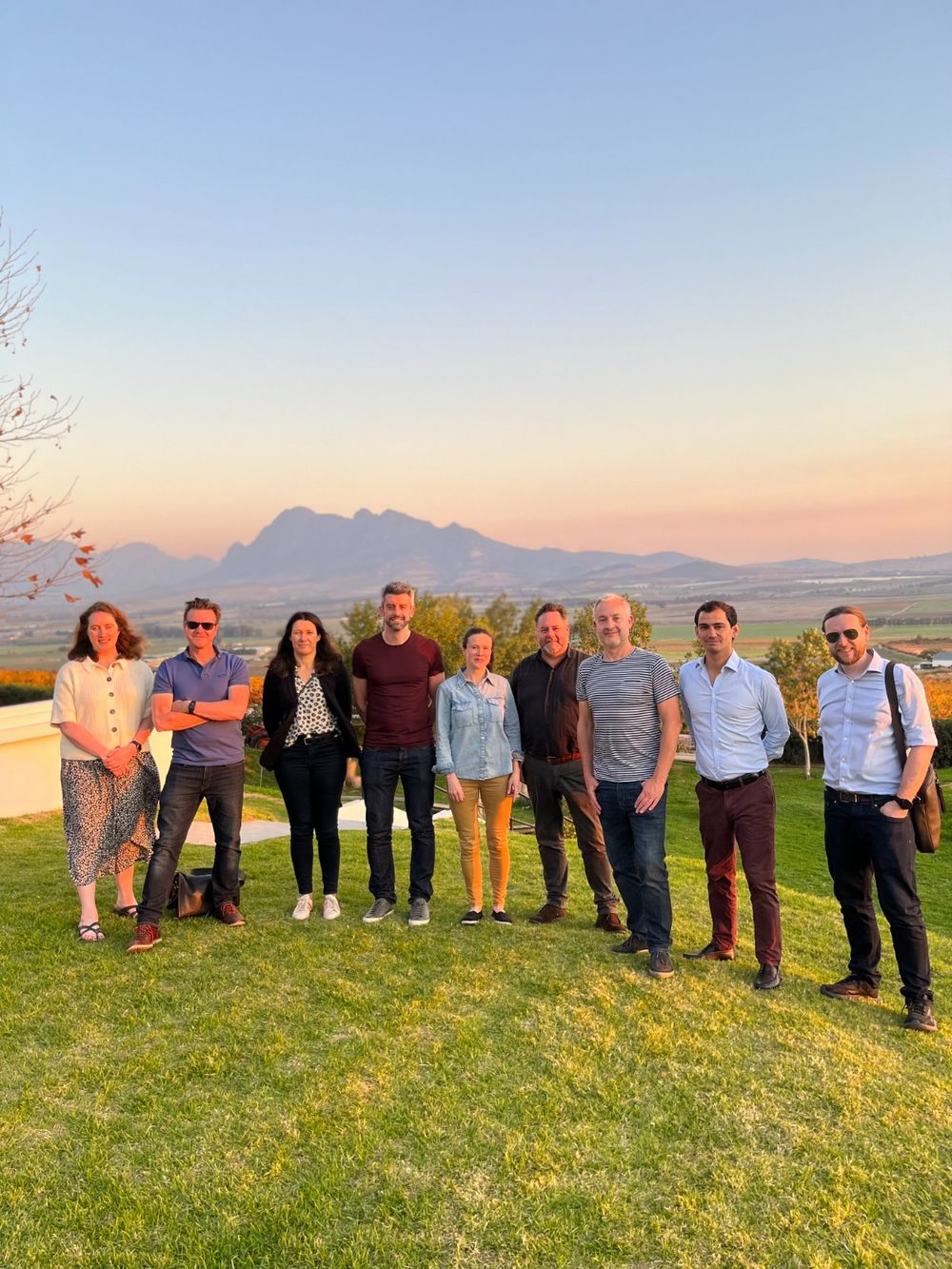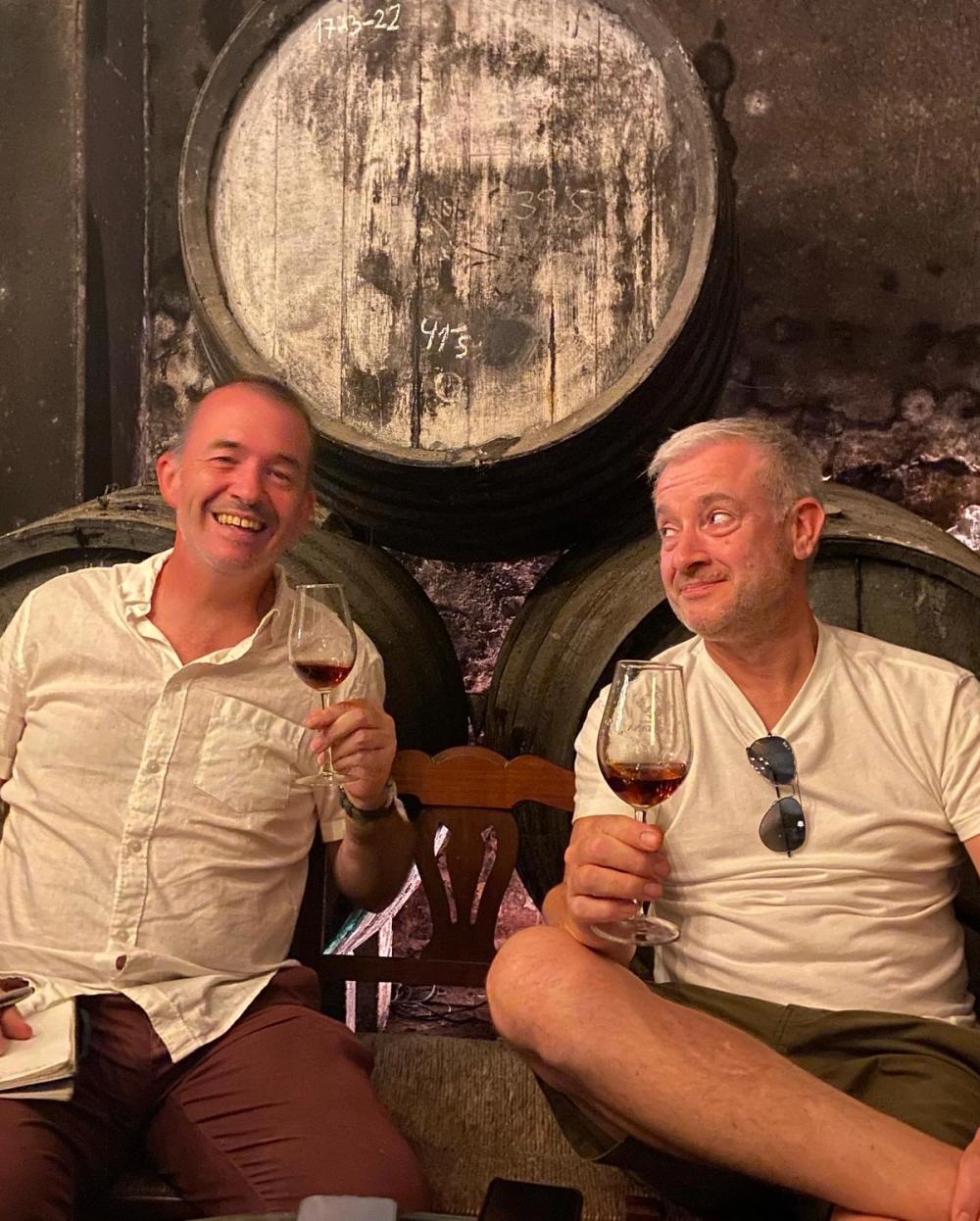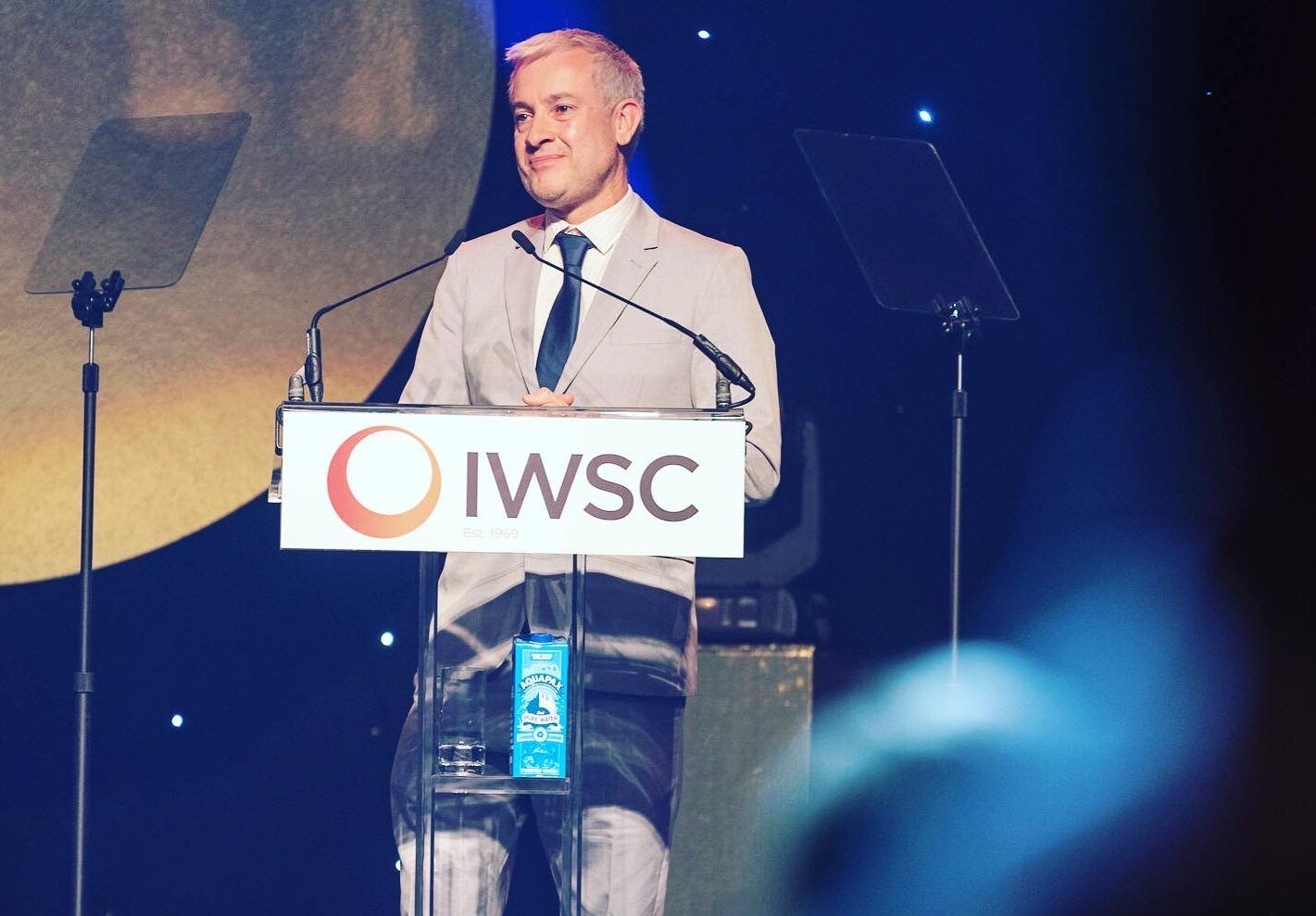“If I have learnt one thing this last year, it’s that old vines can really make a difference in the glass,” writes Kermode.

Heritage vines pictures at Domenico Veronese’s winery in Veneto.
When it comes to writing about your top wines of the year, there is, inevitably, an element of showing off – like sabrage, but without the health and safety issues – however it also presents an opportunity for a little humility, to pinch yourself at how fortunate you have been, and also to reflect on what really matters as the years advance. For me, some of the most striking memories of 2022 have come from heritage names, aged wines and old vines.

What a night: Krug at Ally Pally to the strains of Ryuichi Sakamoto
Krug 164ème edition
The launch, at Alexandra Palace, of celebrated Japanese composer Ryuichi Sakamoto’s tribute to Krug’s 2008 vintage was the kind of event that could never have happened during the pandemic. An intimate concert, with an orchestra of 36 musicians, performing three works, to translate three creations from that epic vintage into music. Krug does things its own way and the experience was spellbinding, as was the Grande Cuvée 164ème edition, one of three cuvées we enjoyed that night. With 2008 as its base, it is beautifully balanced, with chiselled definition and restrained opulence, delicate orchard fruits, tropical hints, luxurious notes of pastry and a distinctive, faintly savoury lactic signature that lingers with great grace.
I can still taste it now as I cast my mind back to that wonderful night, shuddering slightly as I recall the conversation I struck up with an American woman during the arrival reception. Striking and charismatic, but not someone that I recognised, I gently enquired as to why she was there, and she replied that she was a part time Krug ambassador. “What a wonderful job,” I said, as she nodded in agreement, “I bet you wish you could do it full time?” Cue polite laughter. It was only an hour or so later, over dinner, that I realised I had been talking to Janet Jackson, a woman who needs no introduction… Except to me, it turns out. She was, to give her the credit she deserves, absolutely charming about it.

Dom Ruinart 2010 Blanc de Blancs
2022 saw my first visit to the famous chalk cellars that are home to Ruinart, the original Champagne house and, many would say, still the best. Nothing can prepare you for the atmosphere of the Crayères, a cool, peaceful labyrinth recognised as a UNESCO World Heritage Site. We were there at the invitation of cellar master Frédéric Panaïotis, to taste the 2010 Dom Ruinart Blanc de Blancs, the first such cuvée in 50 years to be aged entirely under a cork stopper, rather than crown cap, prior to disgorgement.
This change is a big deal, its impact both significant and also counter-intuitive, for the cork results in a fresher style, when compared to the ’09 Dom Ruinart we tasted alongside it, with a teasing sense of youthful vigour from citrus combining with baking spice, raw almond and toasted hazelnuts. On the palate, it feels tauter than the ’09 and also more intense, with a brooding richness and roundness that’s delicately revealed, like layers of filo pastry. Dom Ruinart 2010 Blanc de Blancs is class in a glass.
Giulio Ferrari Riserva del Fondatore 2007
Tasted at a dinner in London to celebrate Ferrari’s seriously shrewd sponsorship of Formula 1 Racing, this outstanding 2007 vintage Trento DOC sparkling wine, named after the winery’s founder, really stole the show. With a fresh, enchanting nose of zesty grapefruit, ripe apricots and pineapple, supported by toasted brioche, creamy lemon posset and nutty shortbread, a classy, ‘Metodo Classico’, aged on lees for a decade with elegance, persistence and masses of mountain charm. Trento DOC is still undervalued in the UK market, but if anyone is going put it on the podium, where it belongs, then it’s the Lunelli family’s Gruppo Ferrari.
Guilera, Xarel-la, Brut Gran Reserva 2012
Cava has suffered a bit of an identity crisis in recent years, but a change in the rules and regulations has set it on a new course, focused on quality – so I predict a Cava comeback. I visited the DO in October, tasting some fantastic examples of aged Cava, and this was my absolute favourite. From a smallish family producer that specialises in ageing, Guilera Brut Nature Gran Reserva is 100% Xarel-lo, my favourite of Cava’s three indigenous varieties. A decade on its lees, disgorged a mere month or so before we sampled it, it thrilled with its rapier freshness, gently invigorating mousse, striking purity and mouthwatering minerality. Available for as little as £25, it serves to underline the incredible value that Cava offers the sparkling wine lover.

Penfolds, Bin 60A, Coonawarra Kalimna Cabernet Shiraz, 1962
Poured to help launch a new Bordeaux project from Penfolds cellar master Peter Gago, at master sommelier Isa Bal’s Trivet, this magnificent wine, crafted by Gago’s celebrated predecessor Max Schubert, became the talking point at lunch. Never commercially sold, though bottles change hands at astronomical prices on the secondary market, subtle berry fruit still makes its presence felt, amidst ethereal wafts of soft leather, violets, tobacco leaf, charcuterie and sweet souk spice. Smooth, slender and seductive, it is little wonder that many consider Bin 60A one of the finest wines ever made in Australia.
Kusuda Pinot Noir 2008
This was the standout at a wonderful masterclass from Peter McCombie MW, complementing the New Zealand new release tasting with a celebration of aged wines. Created by Hiroyuki Kusuda, a Tokyo-born winemaker who studied at Germany’s Geisenheim University before being mentored by Kai Schubert in Martinborough, this vivid Pinot Noir from 2008 seduced us all, with a beguiling nose and delicate layers of the finest silk enmeshed in a punnet of perfectly ripe cherries. McCombie talked about ‘transcendence’ in the finest vintage wines and this was the personification of it.

IWSC South African judging team
Skerpioen 2020, The Sadie Family
This year, the IWSC conducted its South African wine judging on location in Paarl, flying out a group of senior judges, including me, to lead panels with local experts. It was a fantastic experience, with our visiting team working hard and playing hard, judging during the day and enjoying warm local hospitality in the evenings. Tasted during an old wines masterclass, Skerpioen 2020 from Sadie Family Wines, an unusual blend of Chenin Blanc and Palomino, was the wine we were still talking about the next morning. From heritage vines planted in 1962, a mile or so from the Atlantic Ocean, this is scintillatingly saline, ripe tropical fruit combining with notes of almond and briny green olive, to somehow deliver the intense complexity of Manzanilla in a smooth, summery white wine.

Tasting from the cask with Jamie Goode
Unfortified Manzanilla, La Gitana, 2017, Hidalgo (tasted from cask)
Talking of Manzanilla, La Gitana from Bodegas Hidalgo is its most famous brand, so it was a great pleasure to visit Sanlucar de Barrameda in August, to watch the twice-a-year spectacle of horse racing on the beach – an unforgettable experience. Though steeped in tradition, Hidalgo is also an innovator, exemplified by this soon-to-be-released unfortified vintage Manzanilla from 2017. In order to achieve the required alcohol level of 15% without fortification, an ancient technique is used to partially dry the grapes on mats. The resulting wine is absolutely delicious, its richness framed by a tangy freshness and the most intricate detailing, with waxy lemon texture, baked apples and a salted almond finish.

Antonio Capaldo with micro-vinification tanks
Goleto, Greco di Tufo, 2018
I love the distinctive white wines of Campania, but I had never actually ventured inland, into the hills, until October, when I was invited to Feudi di San Gregorio.
Boss Antonio Capaldo, a successful global financier, has worked tirelessly to protect and also elevate Campania’s historic indigenous varieties including Falanghina, Fiano and Greco di Tufo. Goleto 2018 is the result of a programme of micro-vinification, to find the perfect expression of Greco di Tufo. Poised, polished and pristine, there’s juicy peach, ripe apricot, zesty citrus and fleshy greengage, with a striking salinity that combines to elevate this distinctive variety into a textural masterpiece.
Villa Bogdano 1880, Lison Classico DOCG, 2019
Heritage vineyards have been a theme this year. In November, I was honoured to be part of the inaugural ‘field trip’ for the Old Vine Conference, hosted by Domenico Veronese, a champion for heritage vines, at his winery in Veneto. Tasted during a masterclass from the always engaging Sarah Abbott MW, this venerable wine comes from incredibly low yielding Tocaj Friulano vines, planted between 1895 and 1929 on this organically cultivated estate. Perfumed, with camomile and orange blossom, a golden bauble colour somehow reflected its luminous texture, with dried herbs and a beautiful citrus acidity, all exquisitely balanced to deliver an elegant textural feast.
If I have learnt one thing this last year, it’s that old vines can really make a difference in the glass, yet they are still being grubbed up at an alarming rate because they are less productive. We need to act together to preserve these living legends before it’s too late. There’s a new year’s resolution.
































